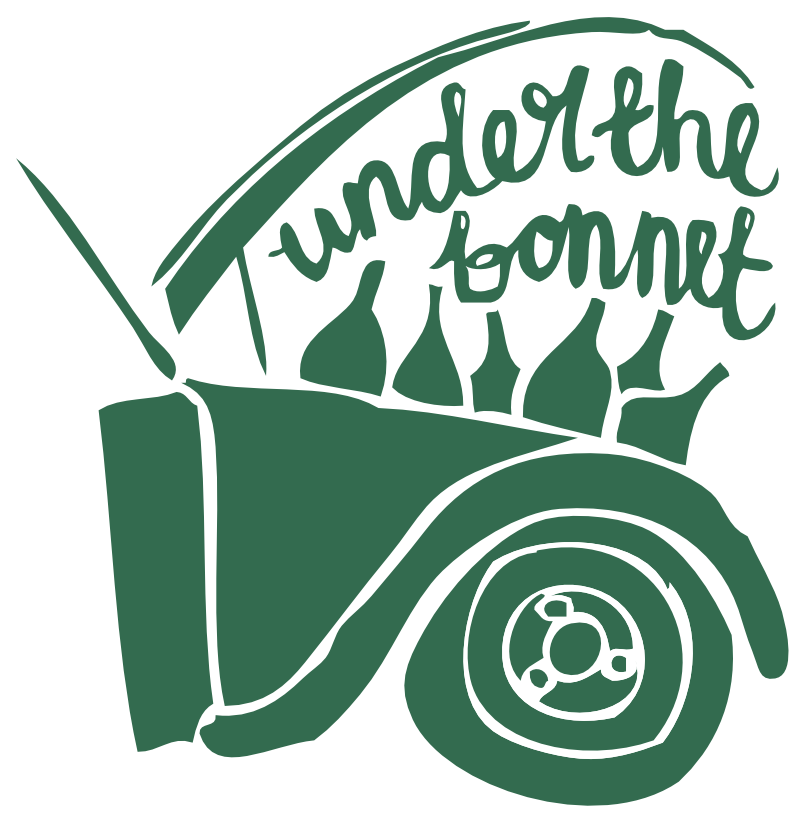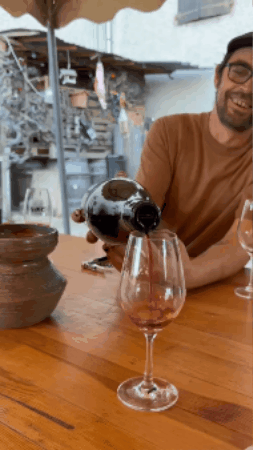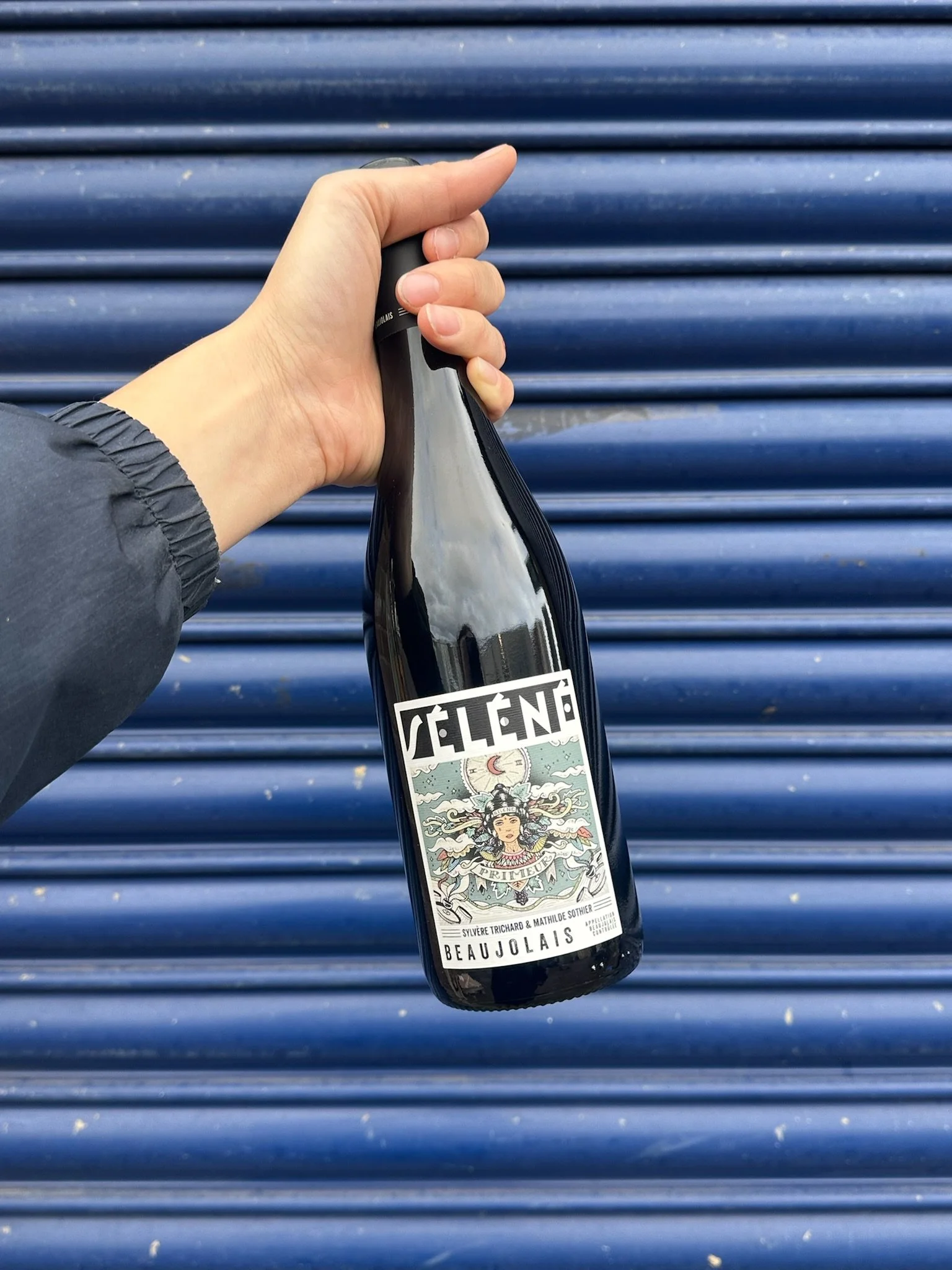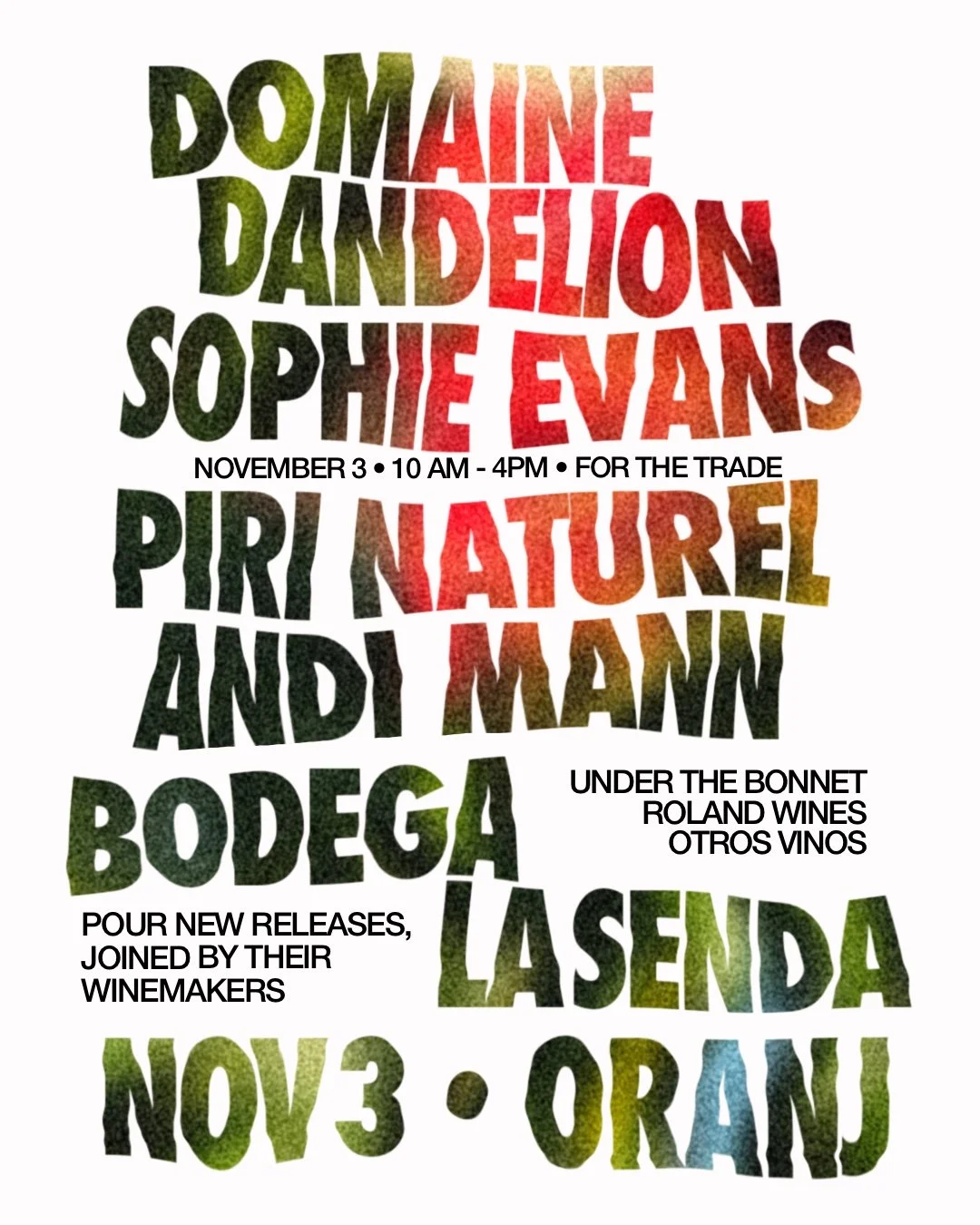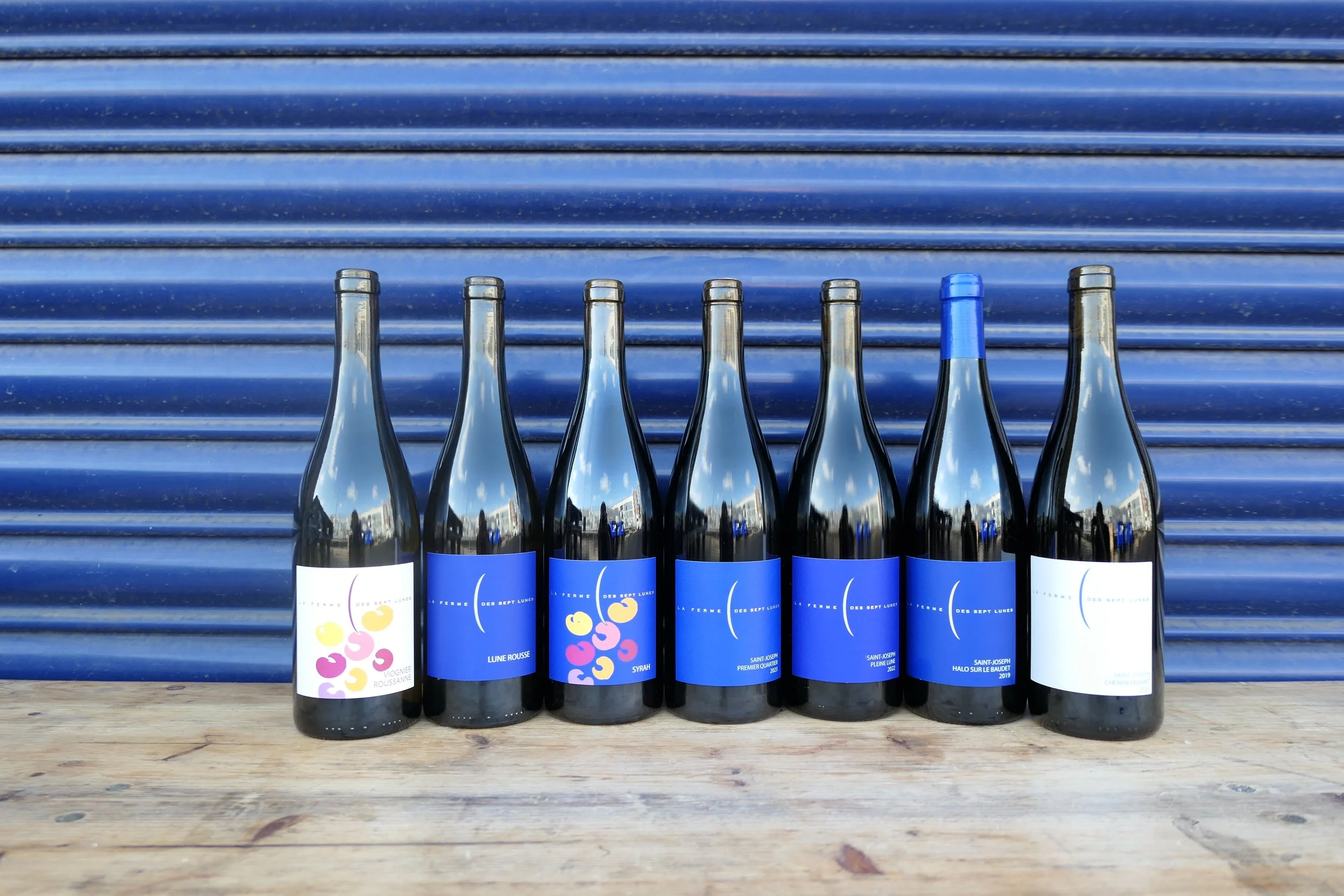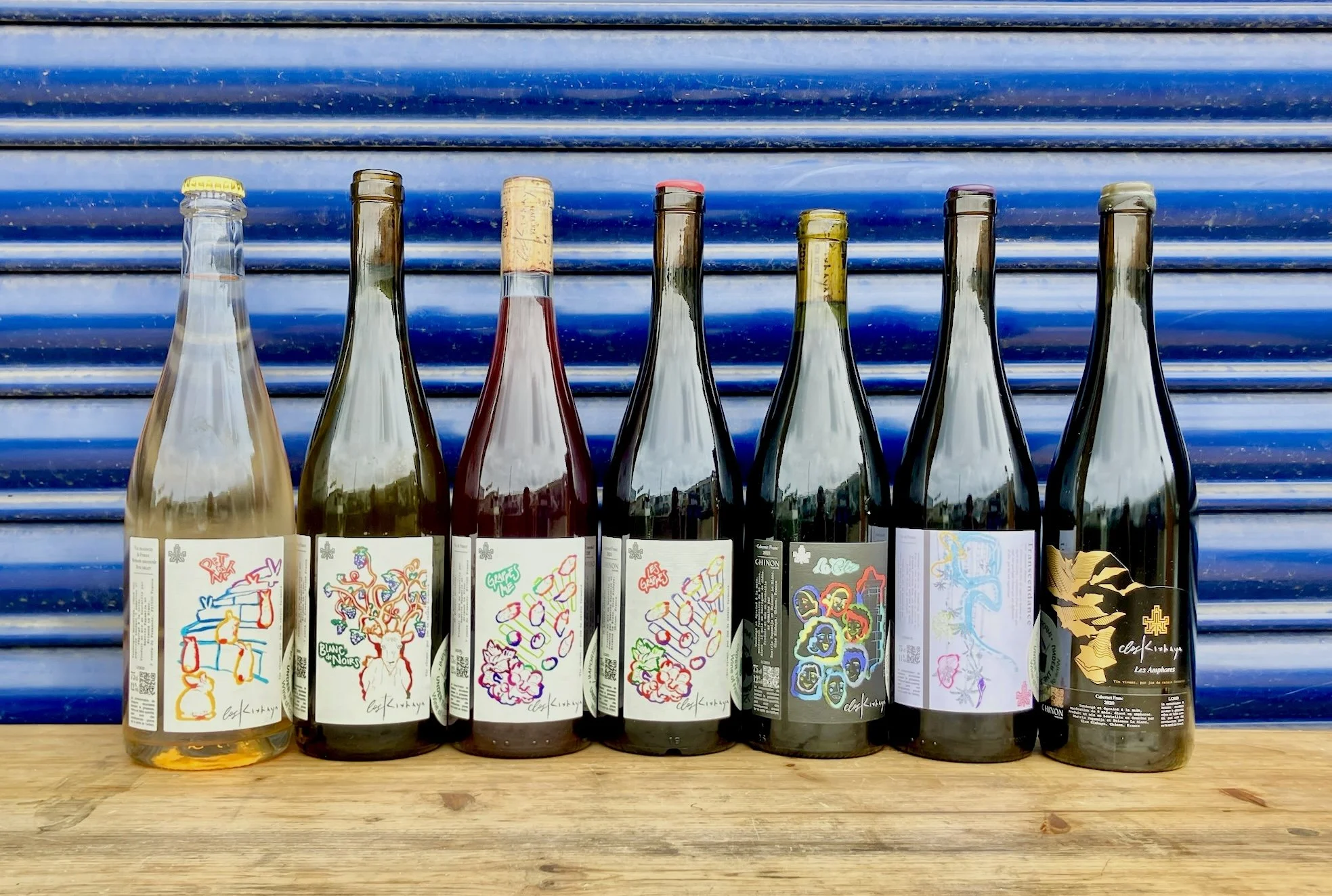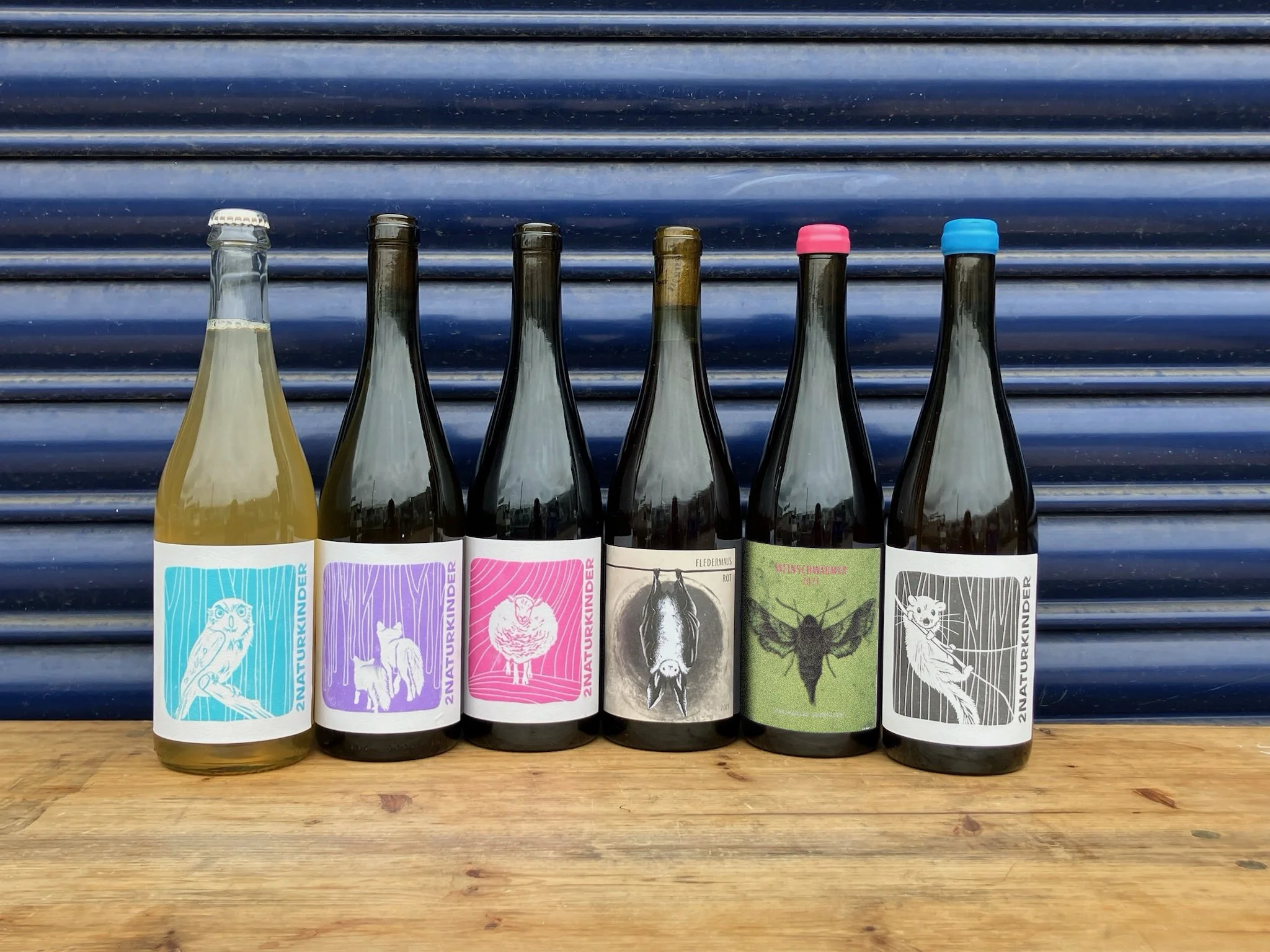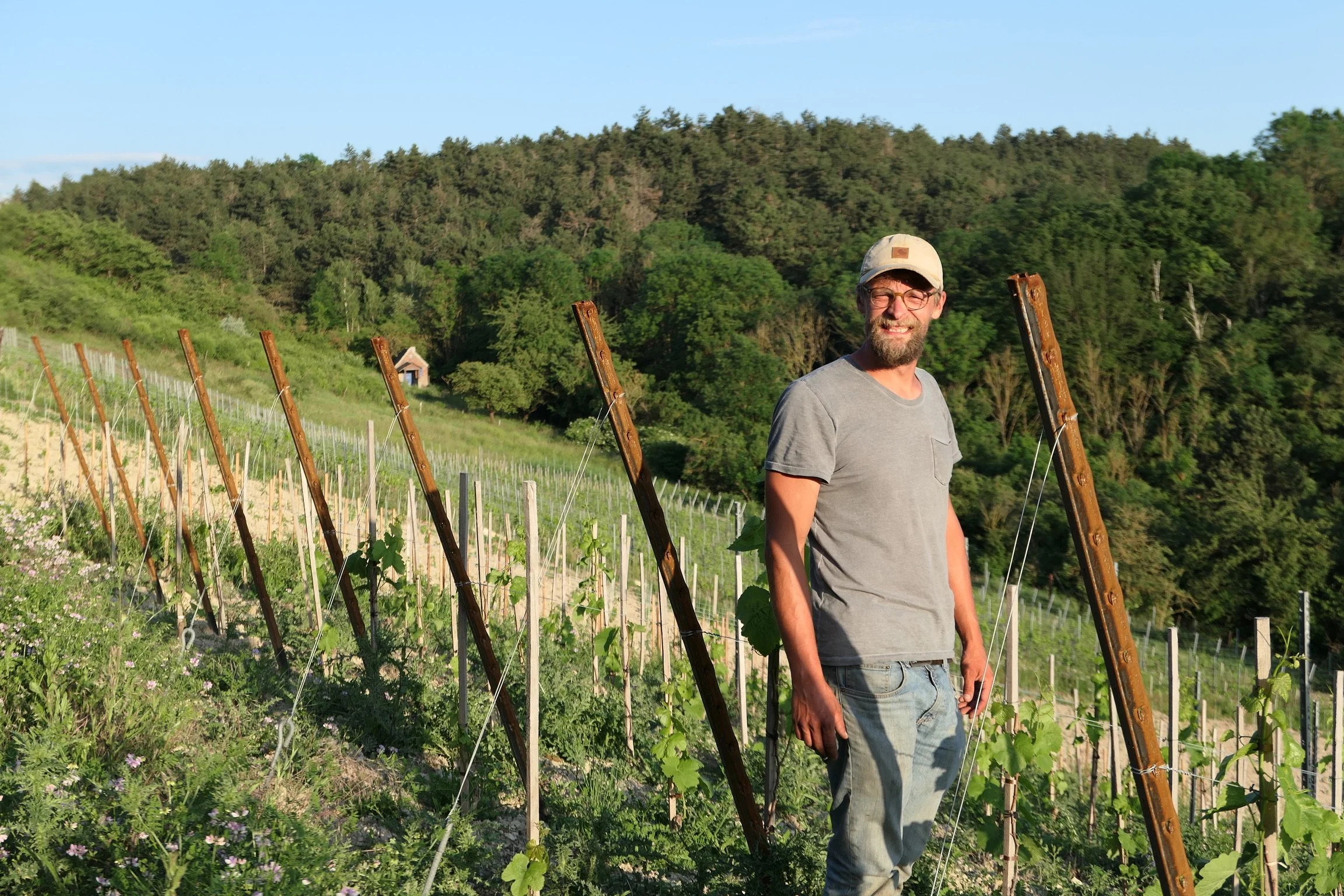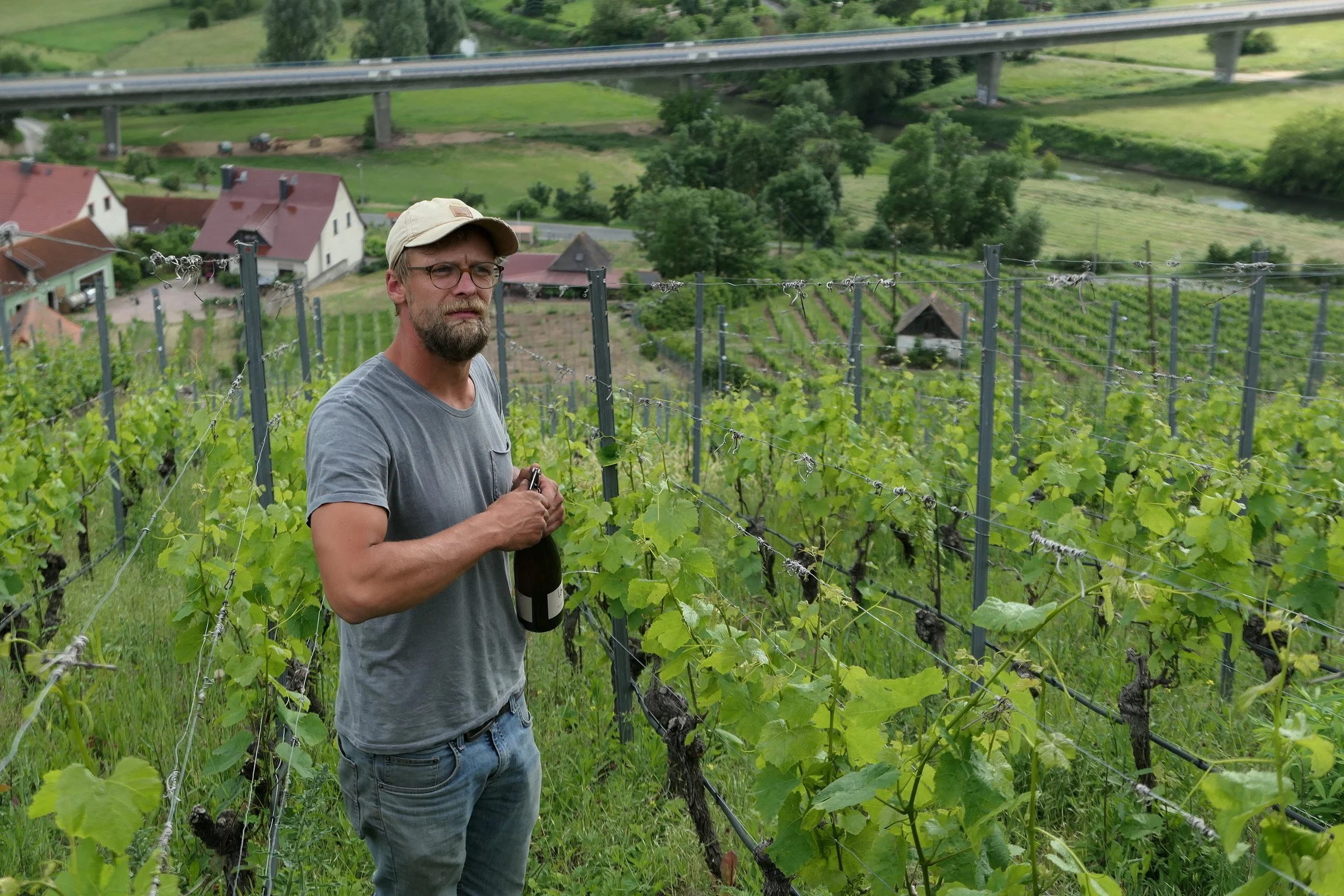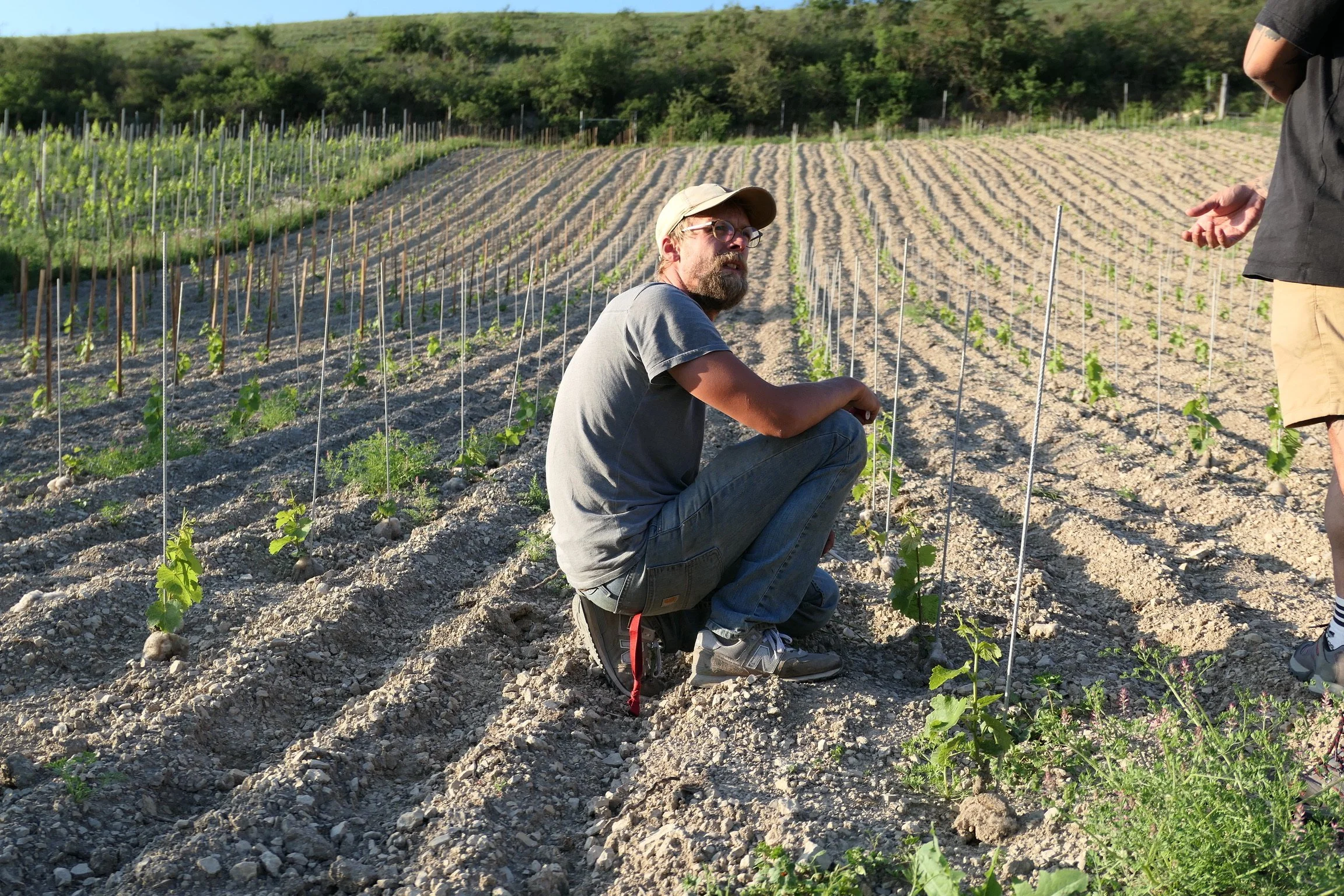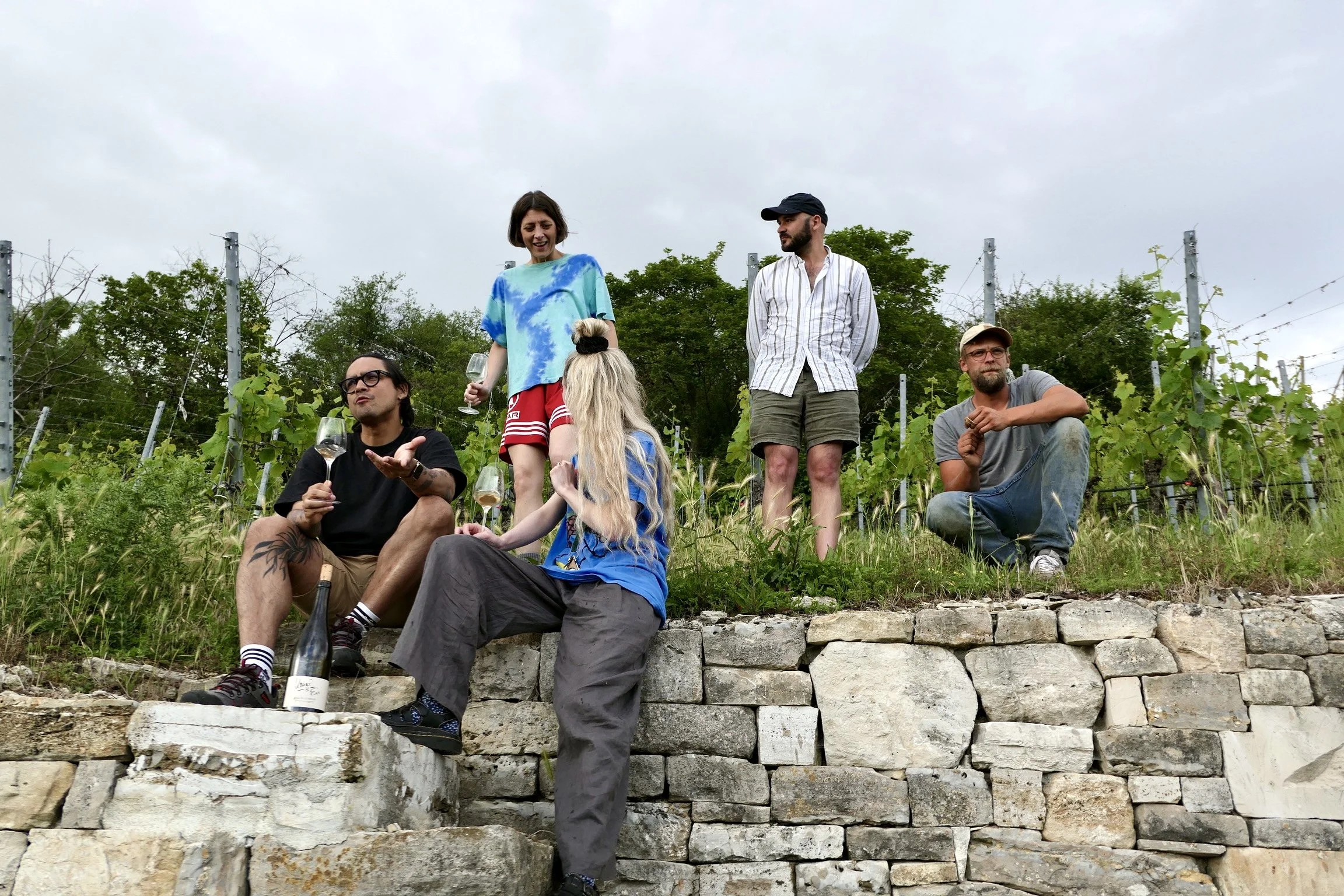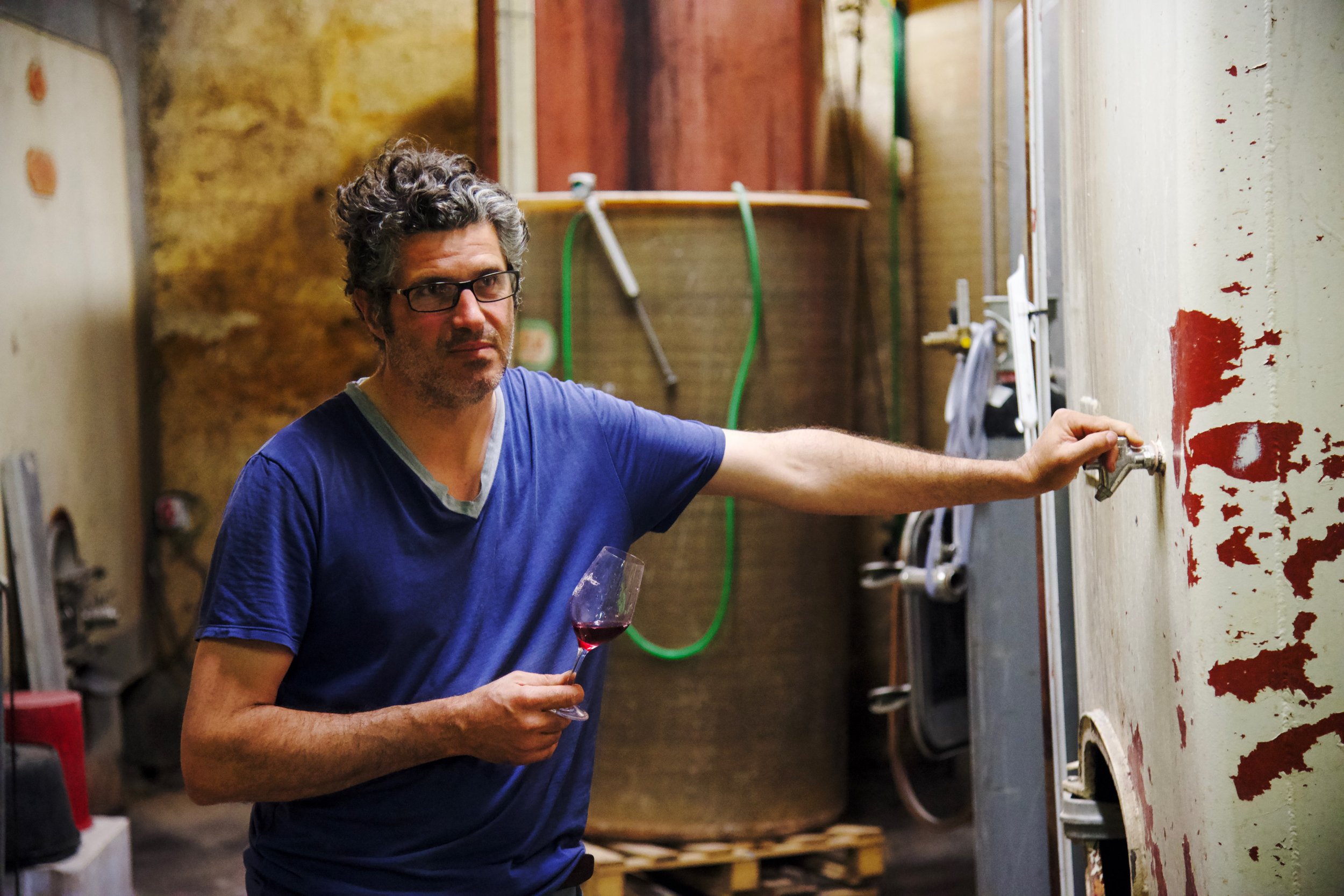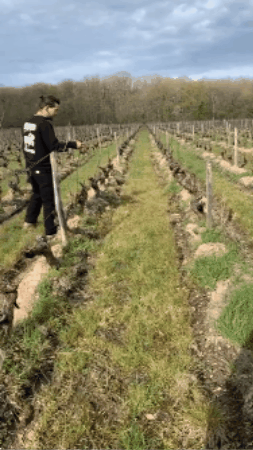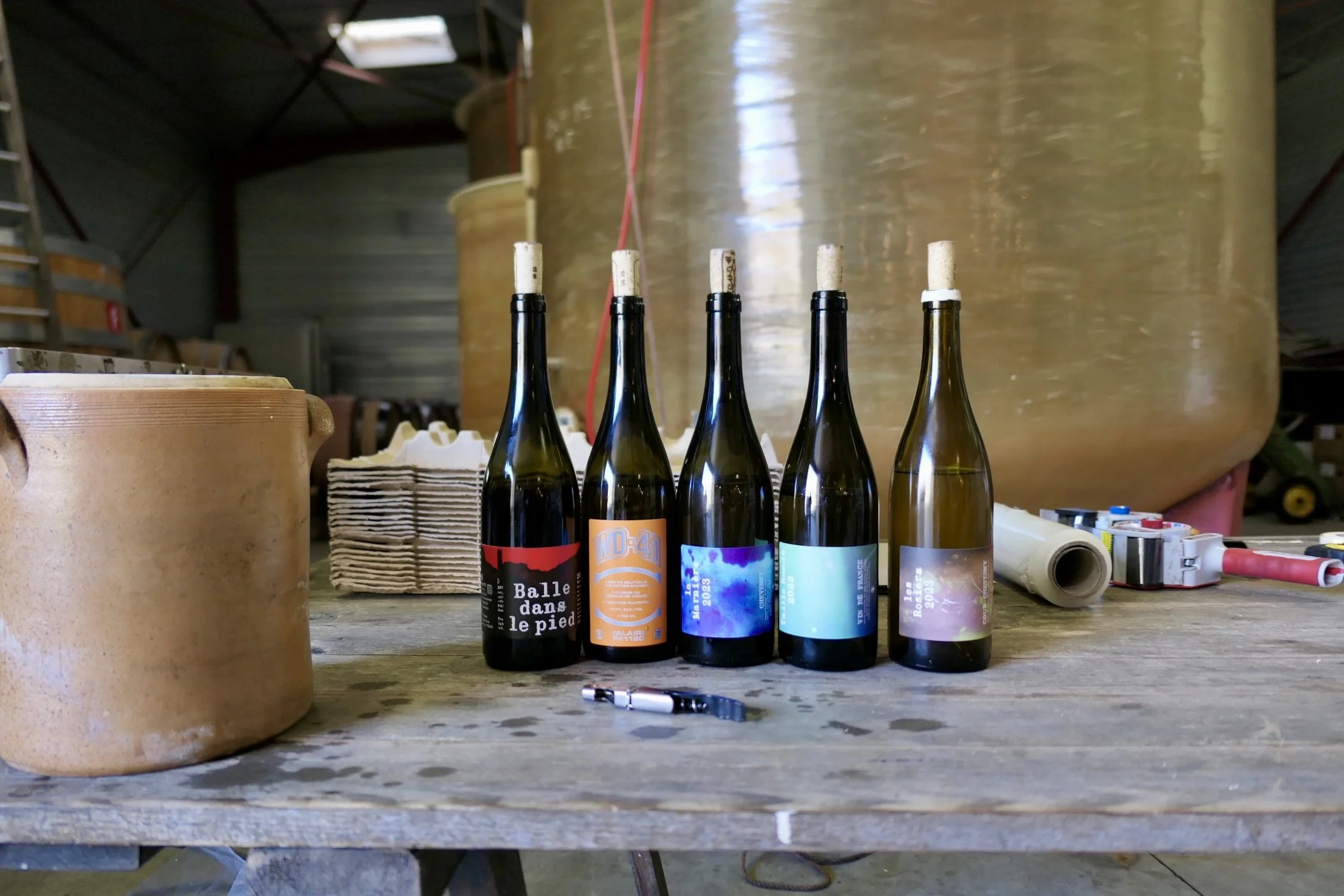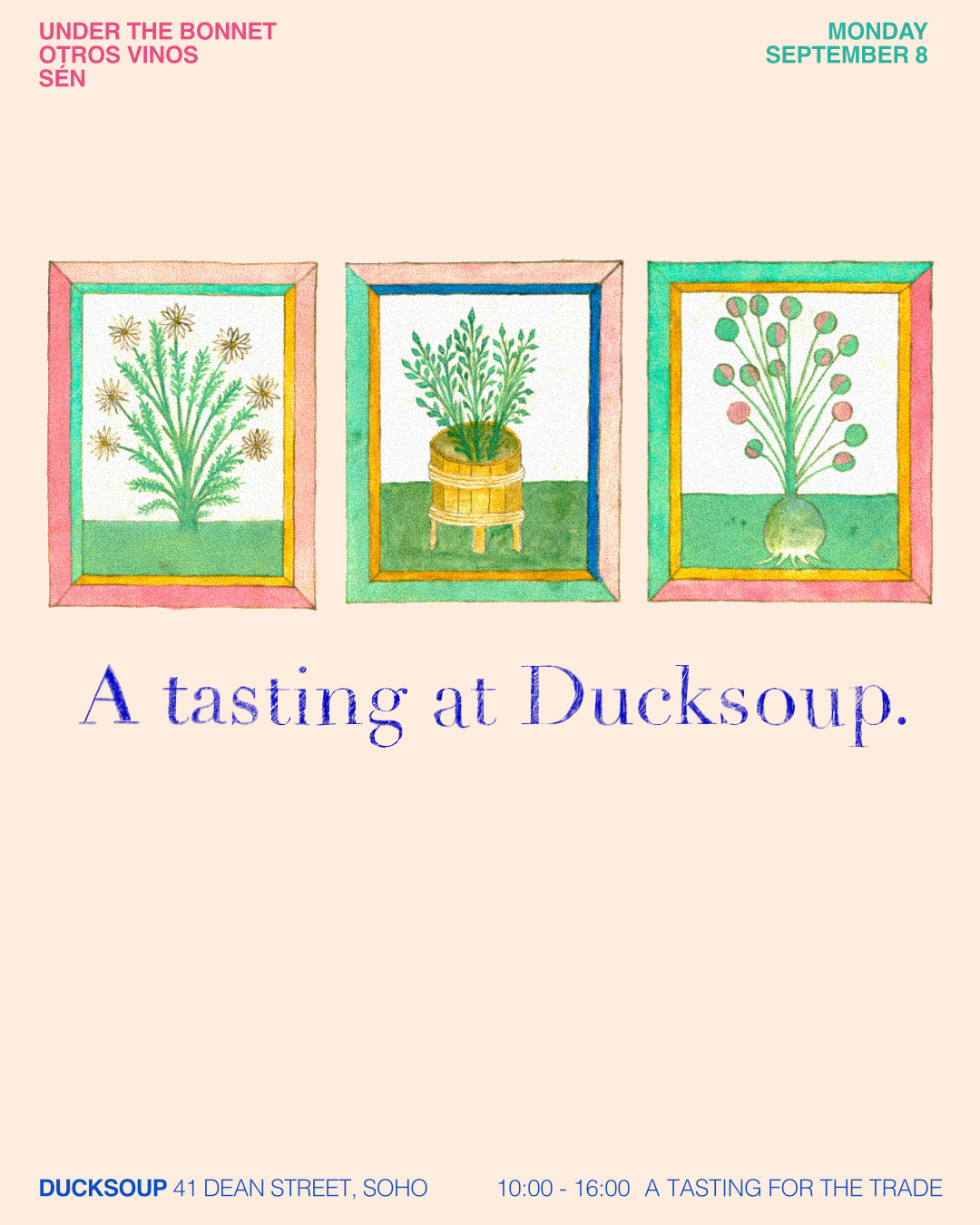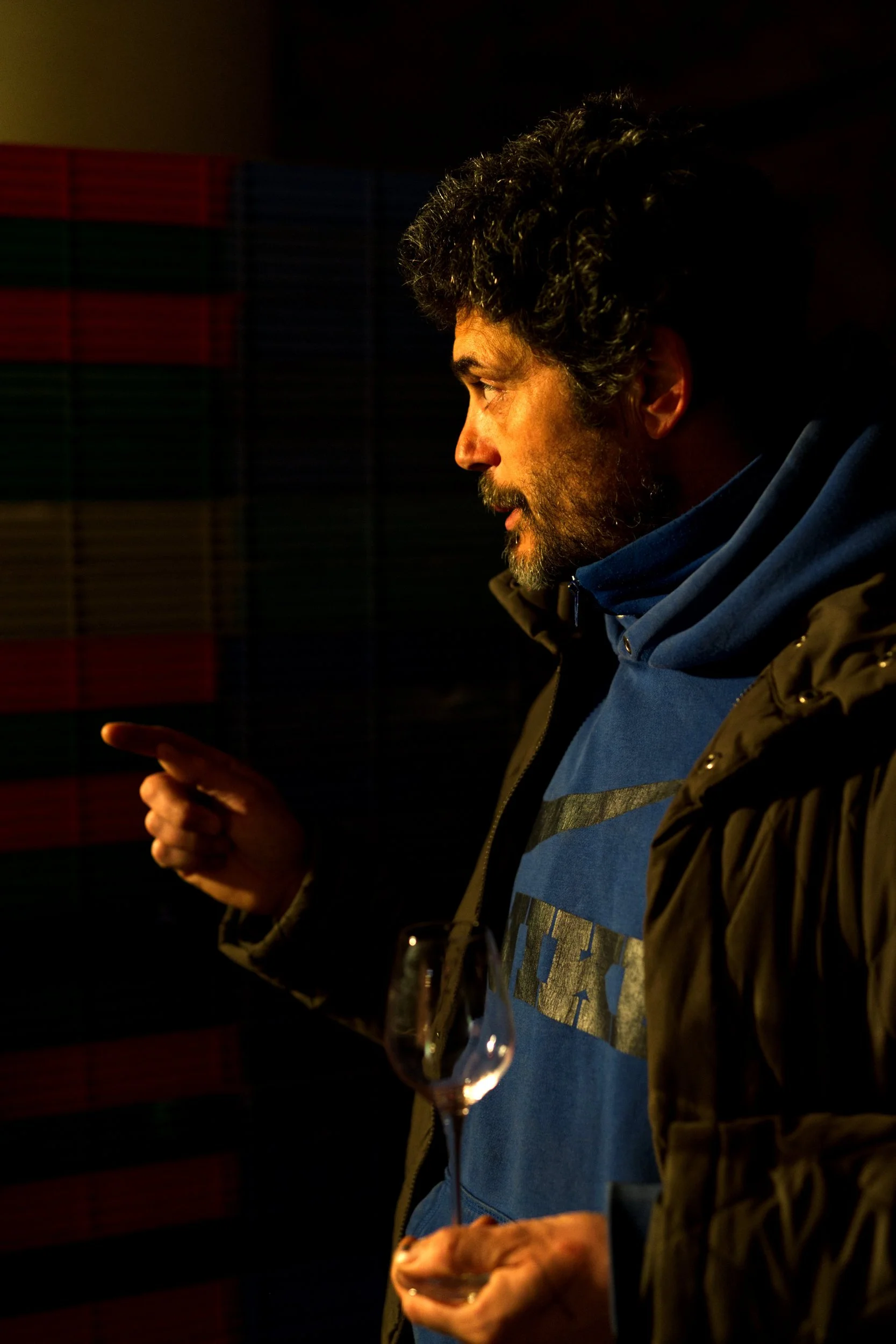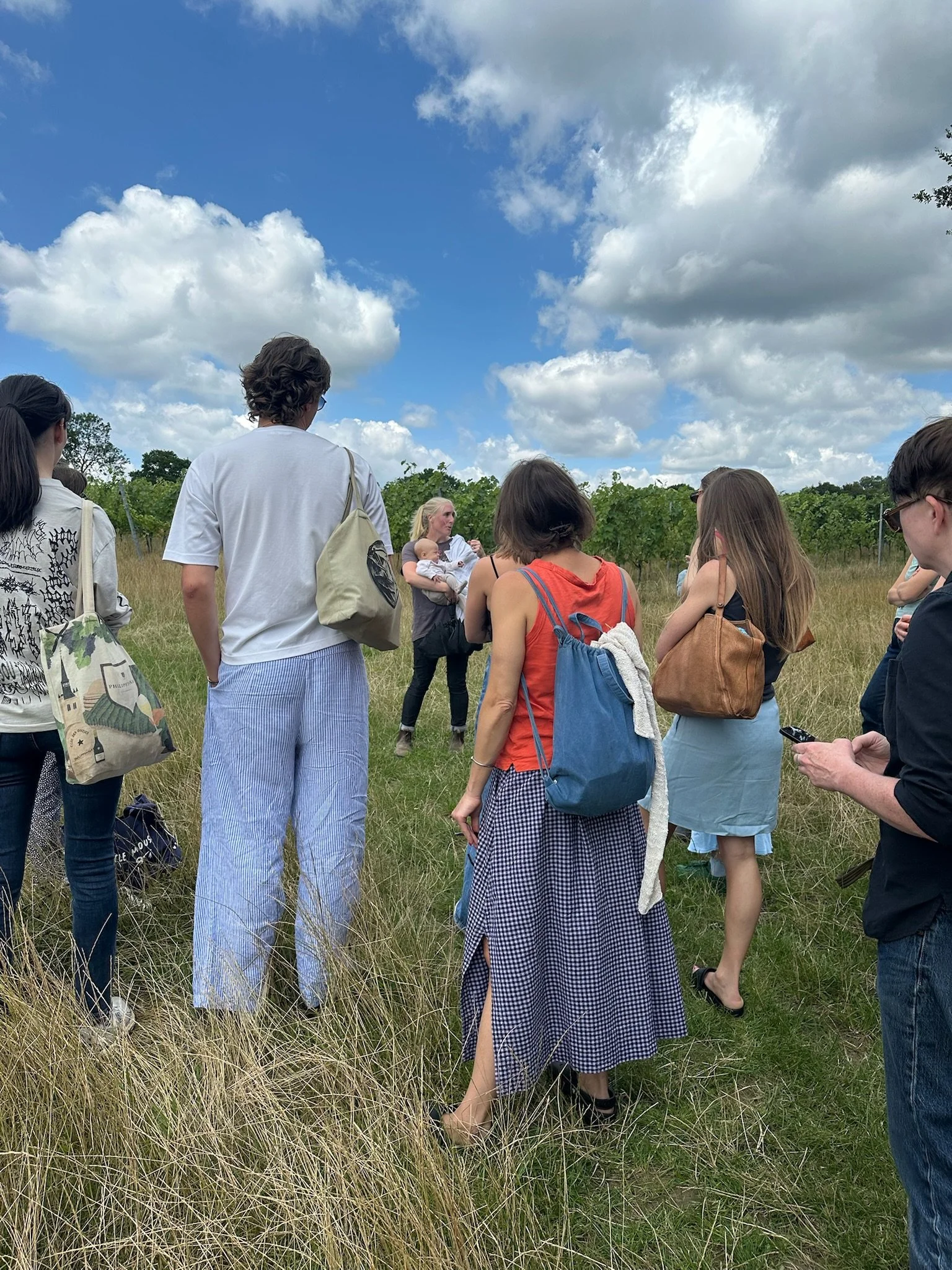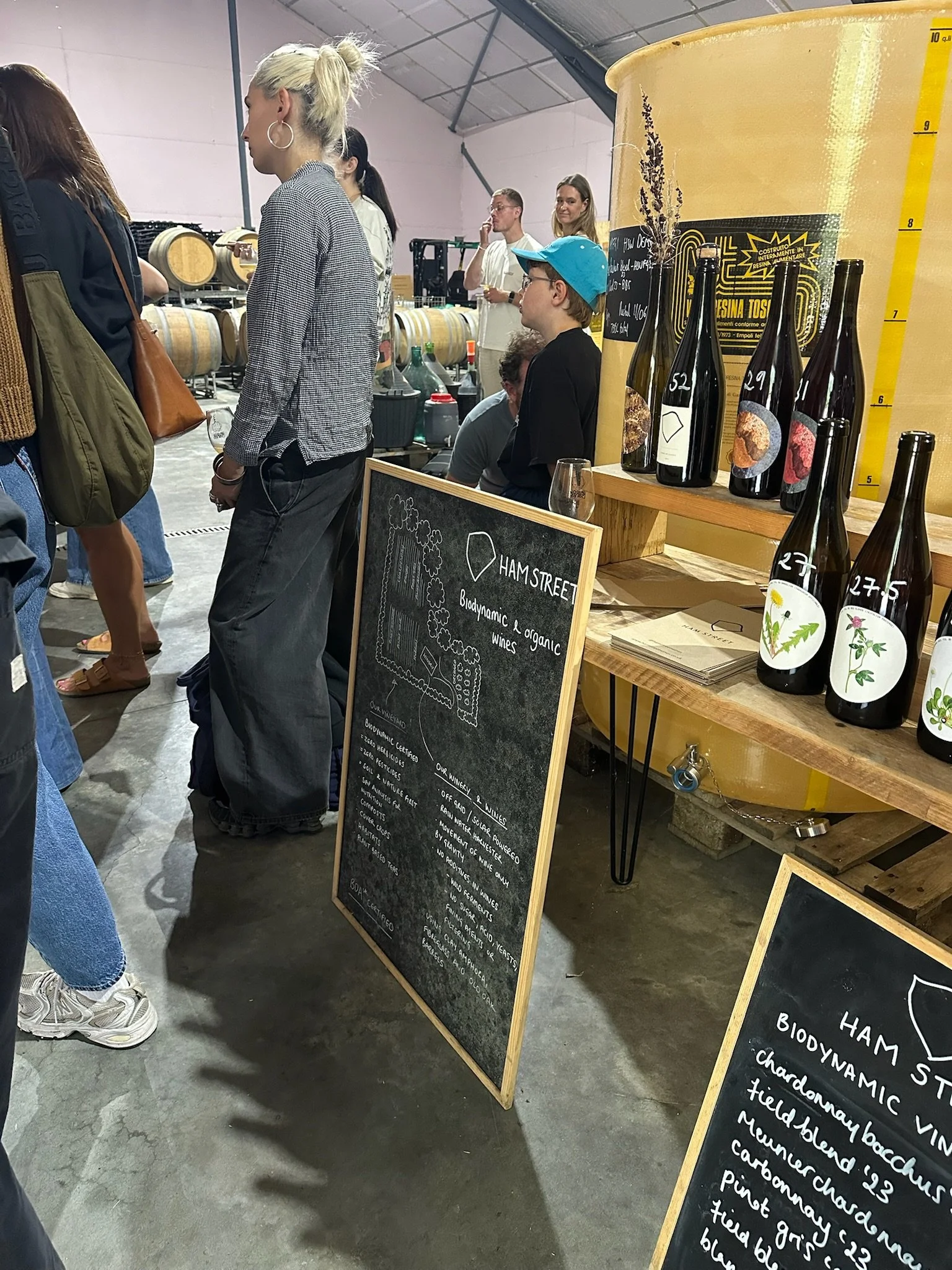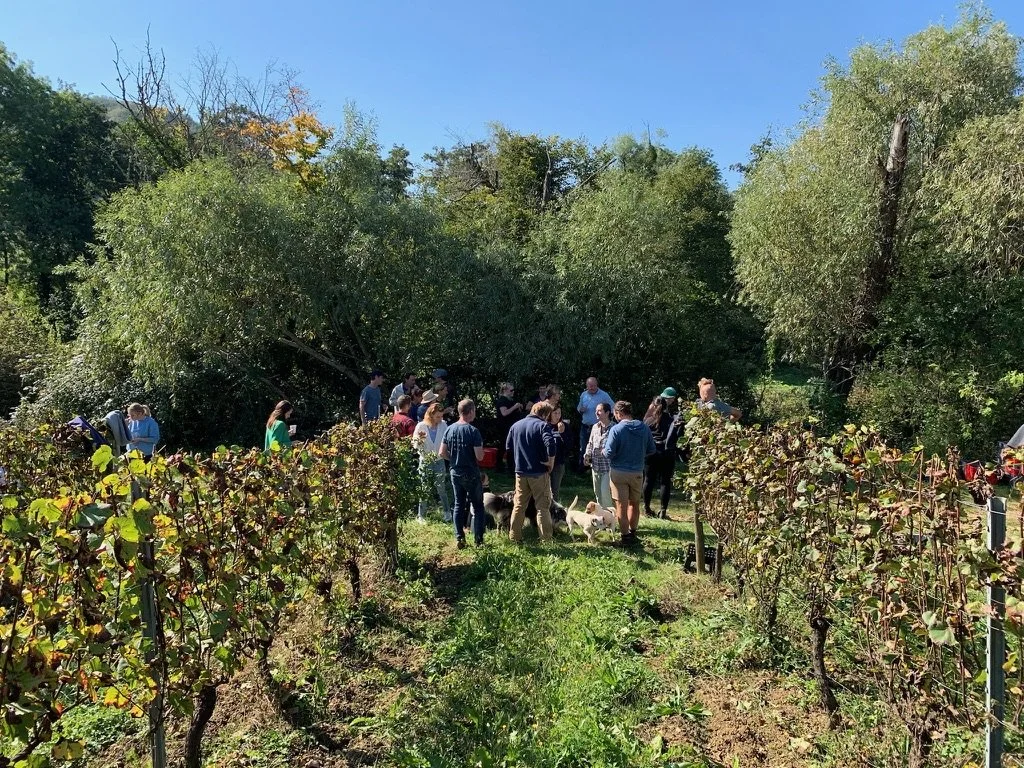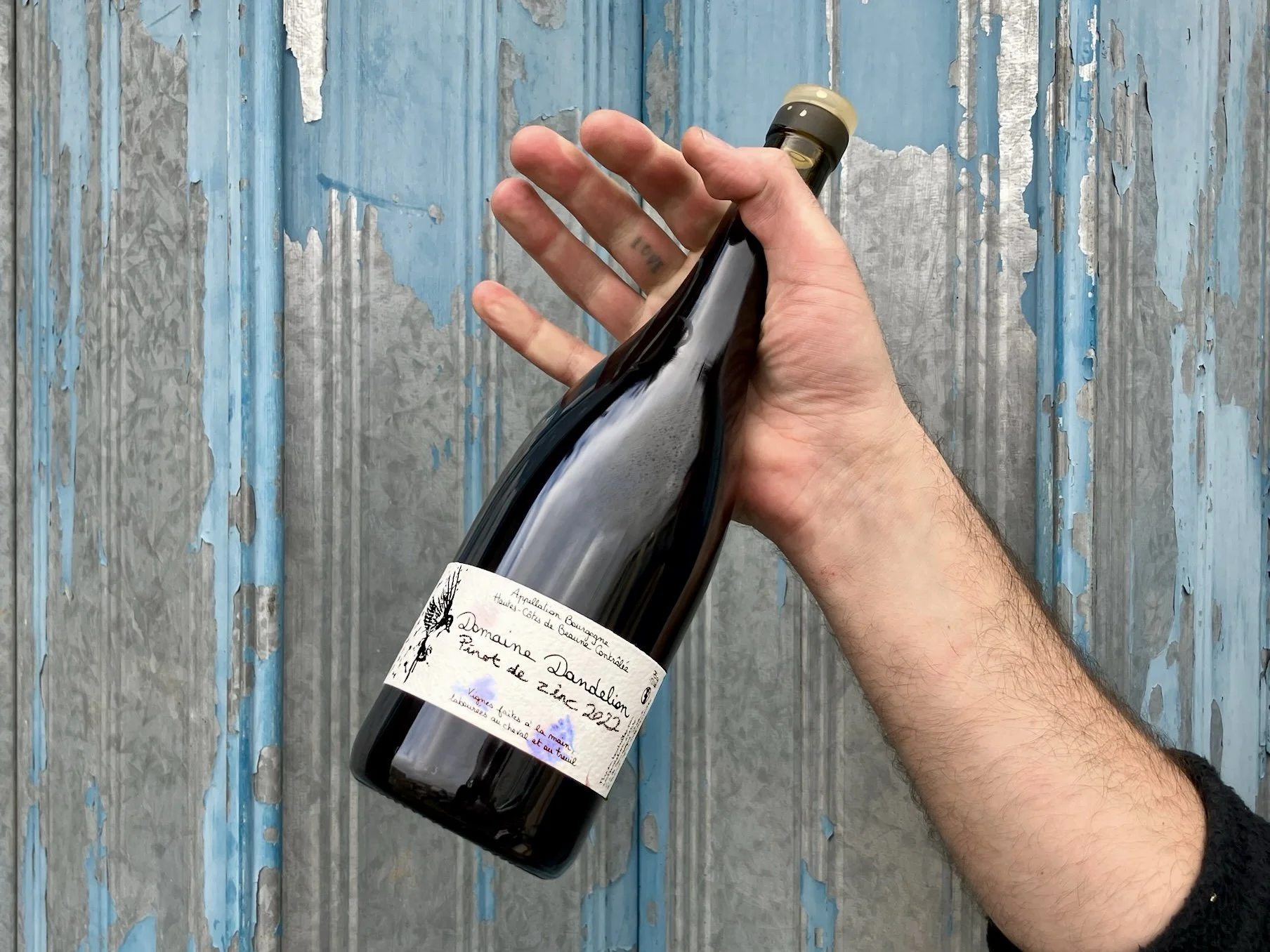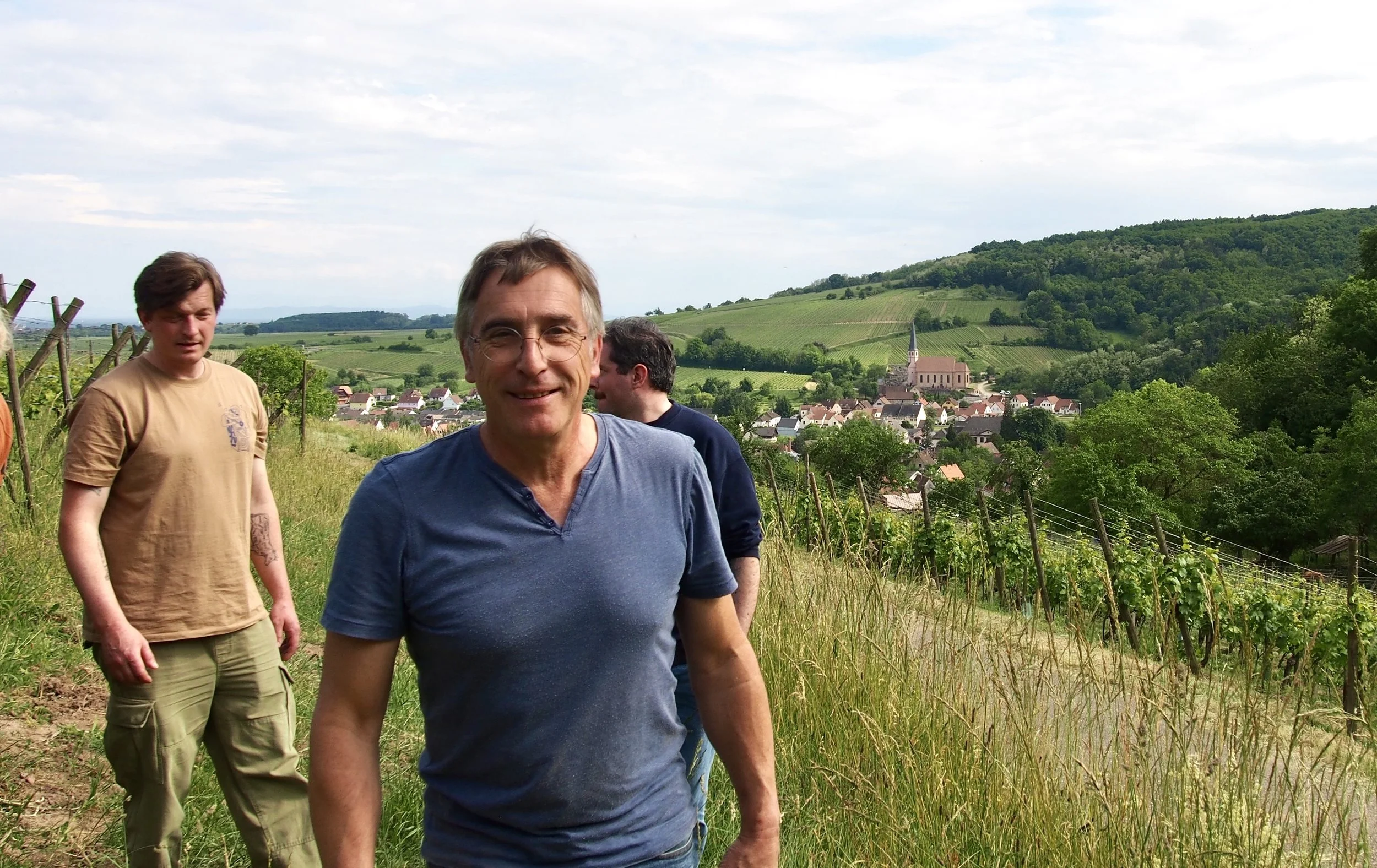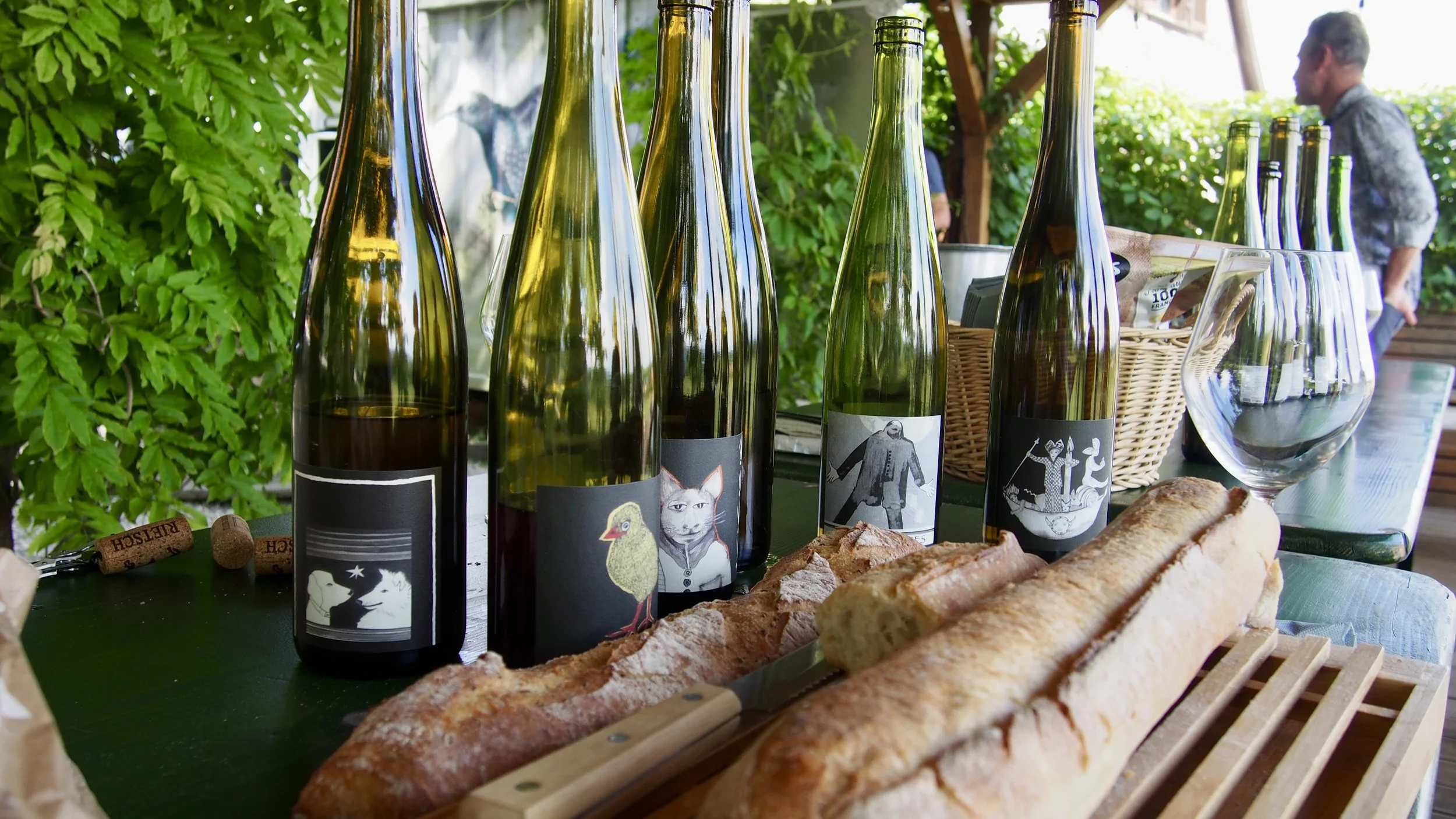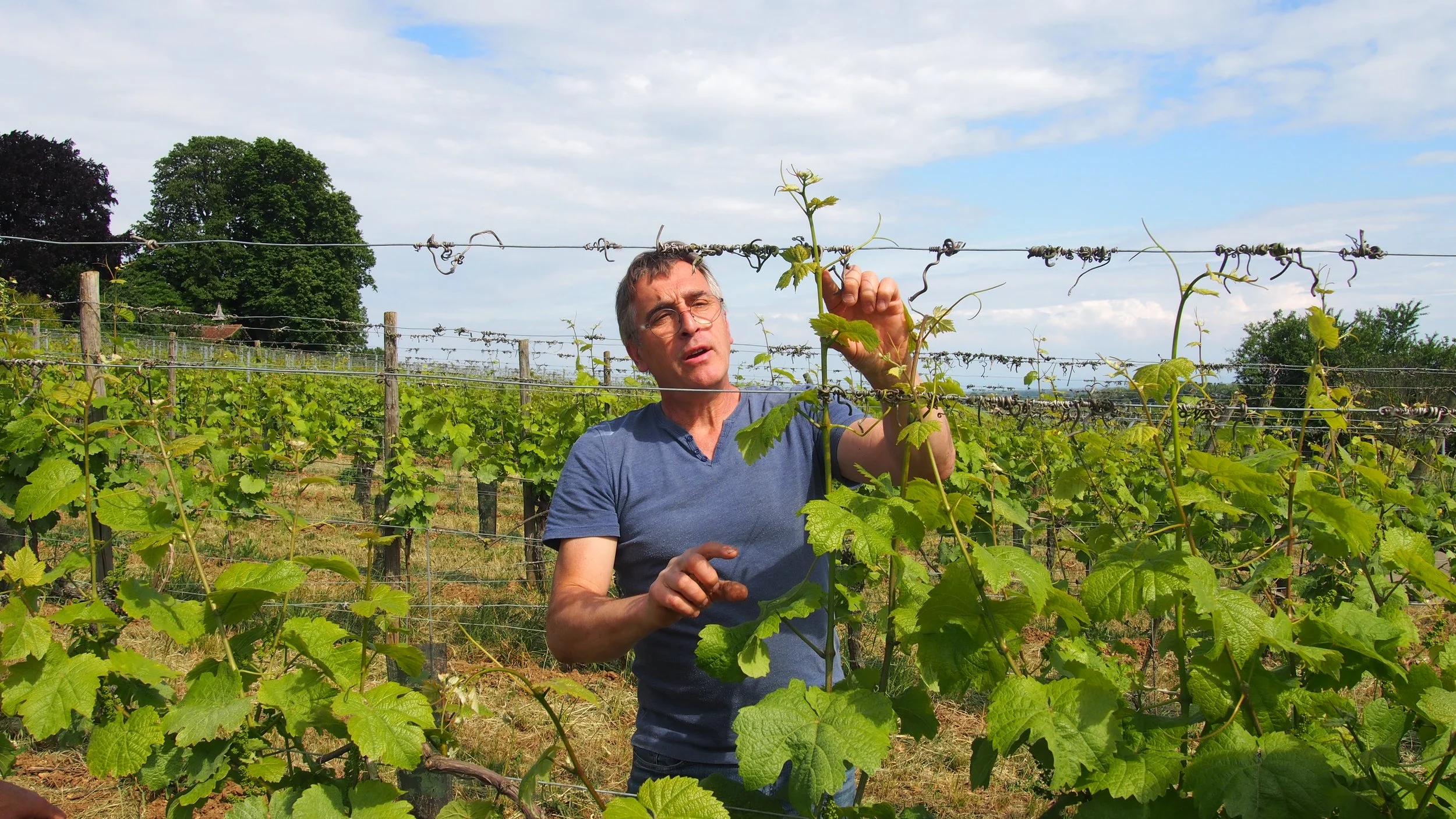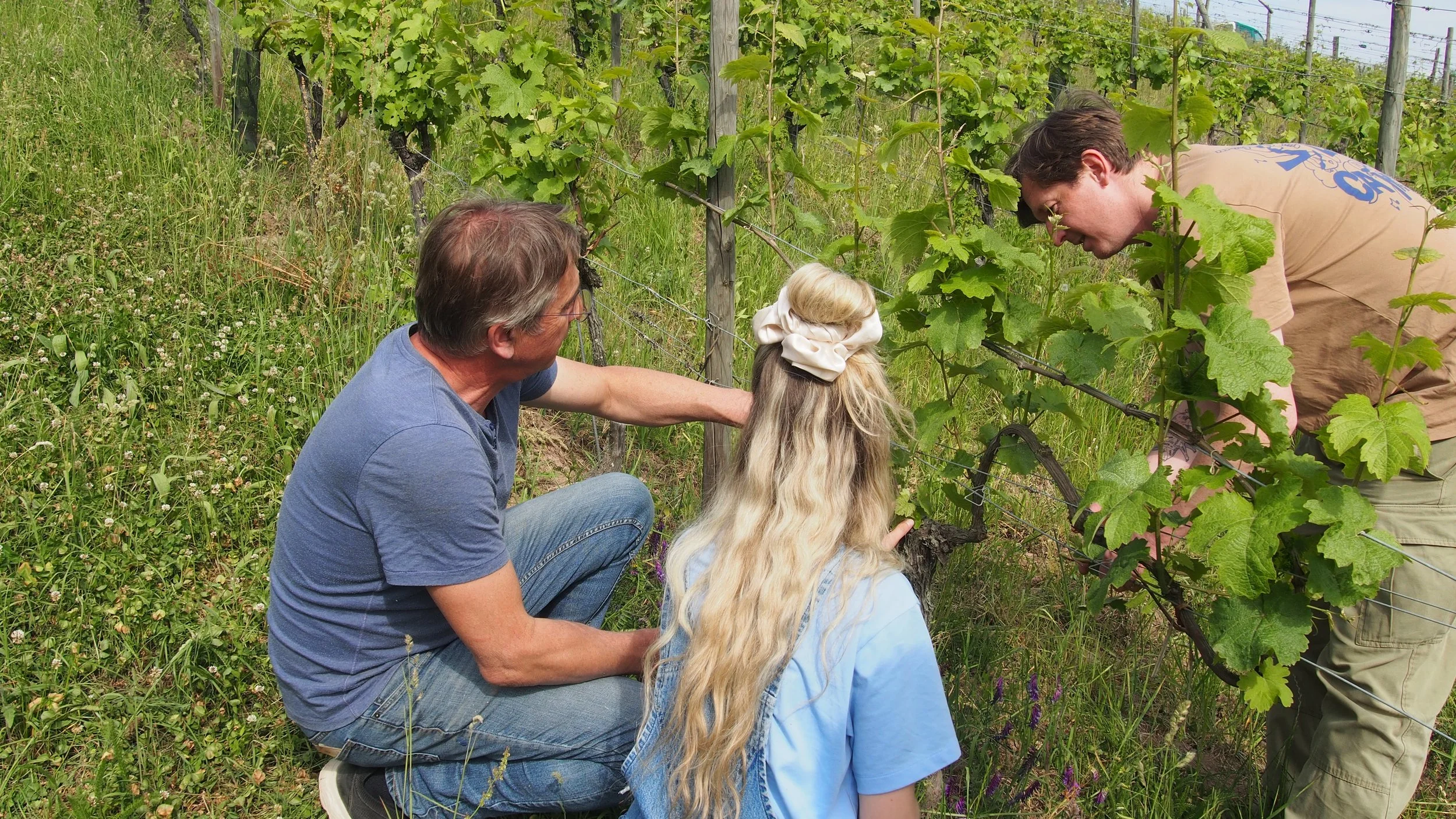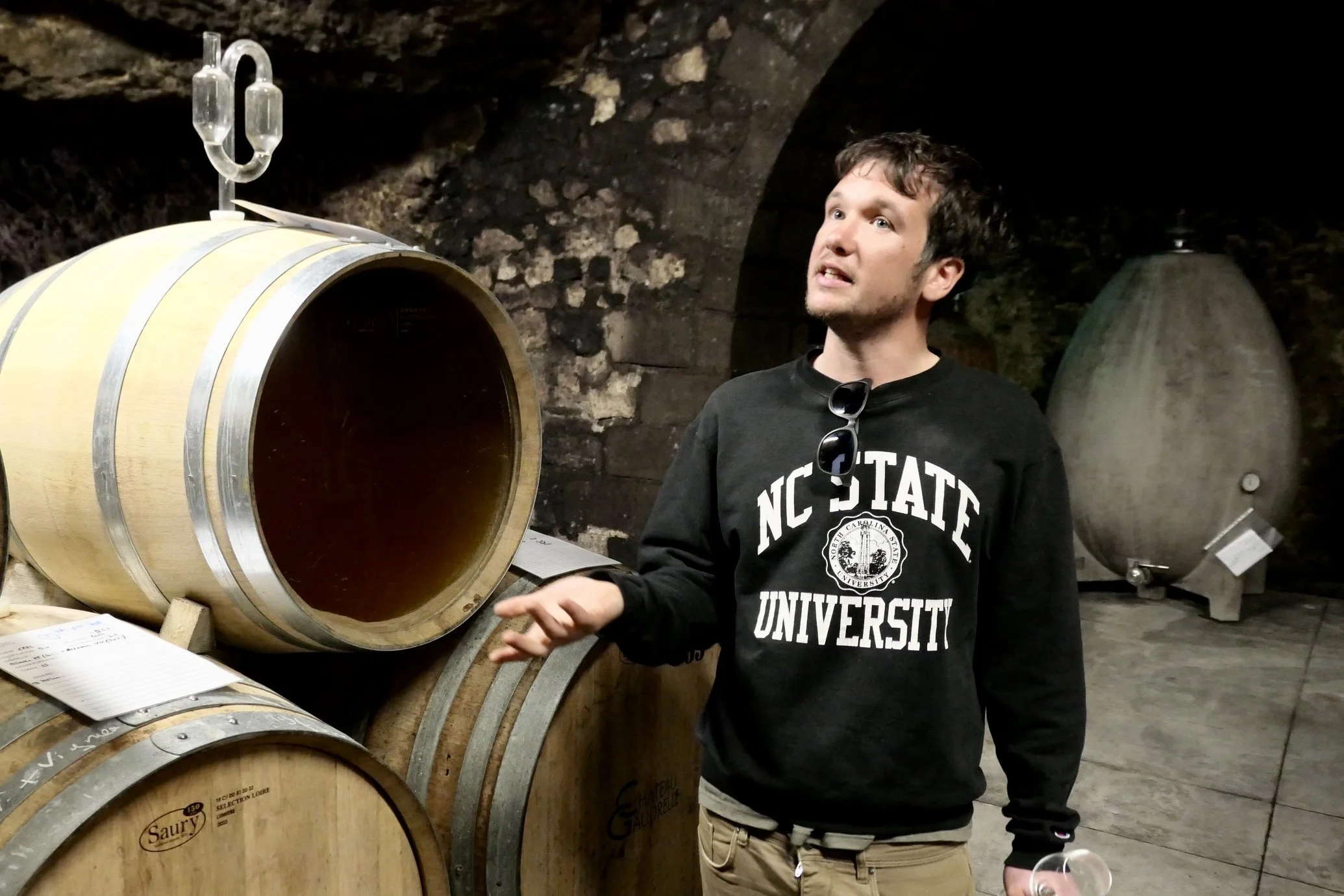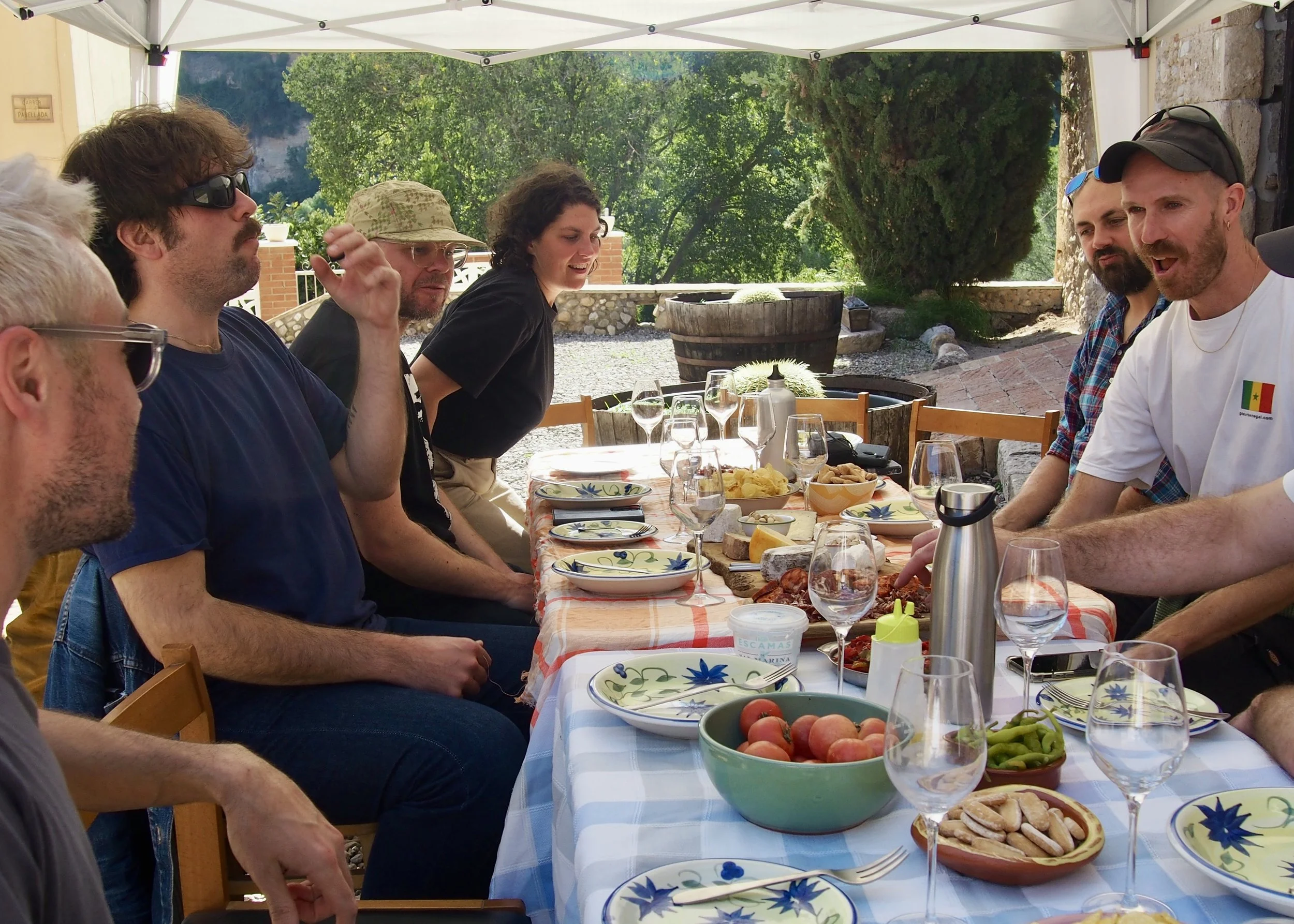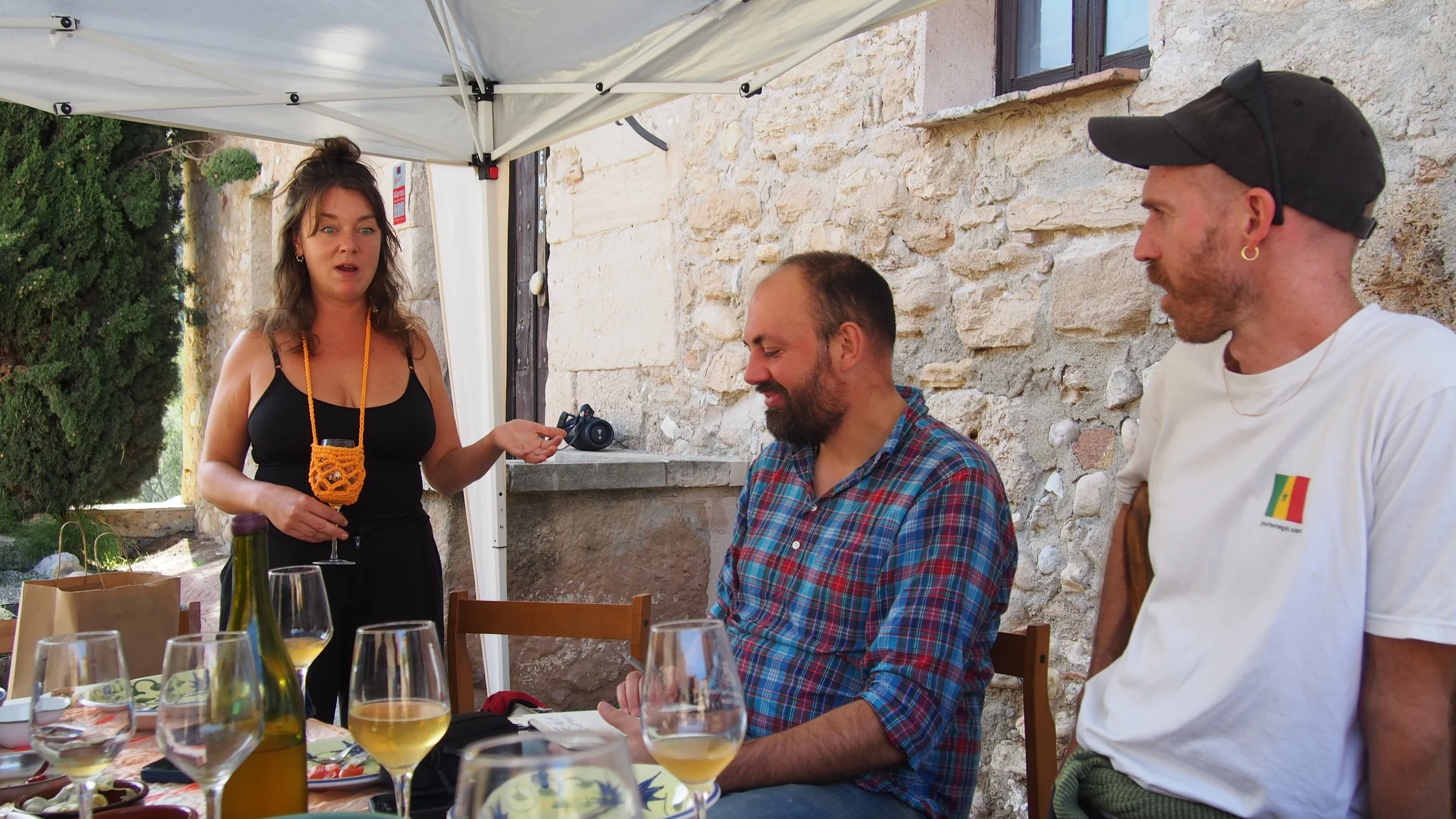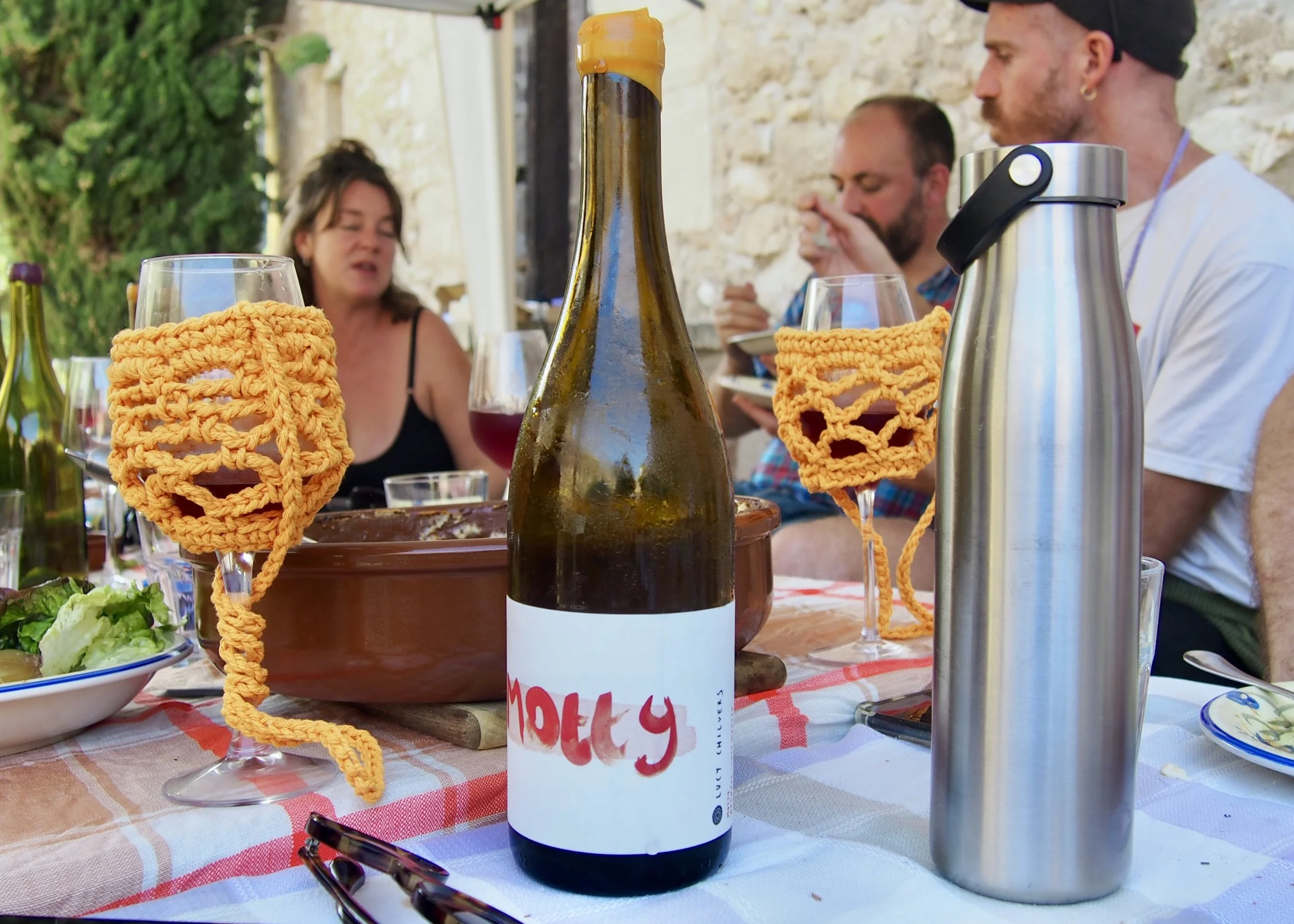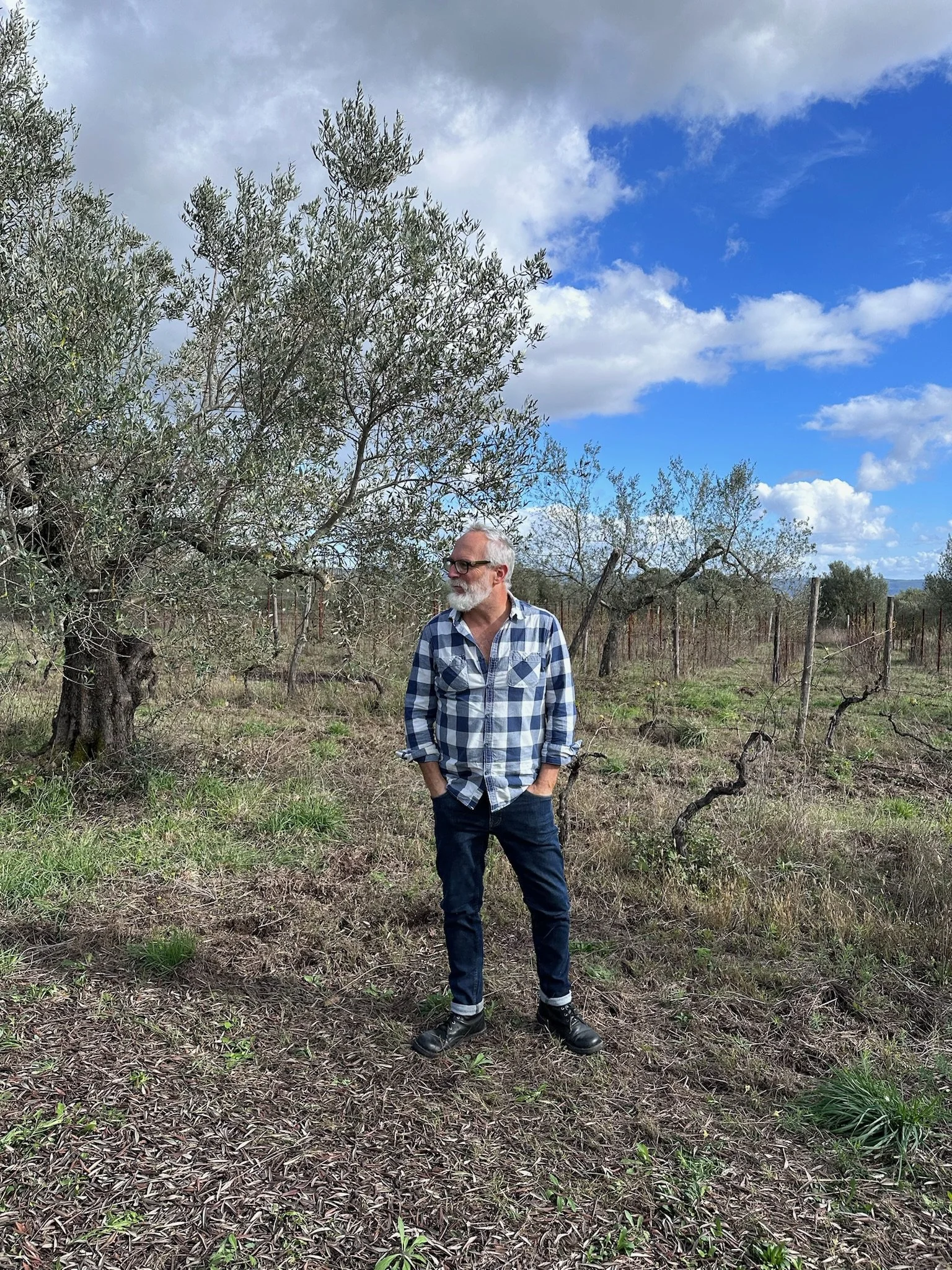We have a few new wines from across three recent vintages, so I thought it might be useful to discuss the vintages through the context of the wines, and first up would be the Pet Nat from 2024
2024 - Steinkauz - Silvaner
Steinkauz is our Silvaner pet nat, made from a small portion of one of our oldest Silvaner vineyards - where we would do two picks, the first early for acidity which is pressed directly, and the second later for some more phenolic complexity, these macerate on their skins for a couple of days before pressing. The two wines are assembled and bottled to continue fermentation together.
In 2024 we were only able to produce a tiny amount - it was a year in which everything that could go wrong, did huge losses to frost, and then further losses to really bad mildew. Across all the parcels we were 70% down compared to 2025, so we also purchased some organic Silvaner from a neighbour in Volkach.
But after the terrible frost of 2020, we've been building up a real reserve of back vintages in the cellar as an insurance policy. So even though it of course really stings in years when we lose this much thanks to the extremes of climate change, we have enough stashed whereby even if we lost everything, it hopefully wouldn't ruin us.
NV - Vater and Sohn No6 - Muller - Thurgau, Silvaner, Riesling, Pinot Gris
So the sixth blend of our Vater and Sohn is actually all 2023, but we're going to keep not stating the vintage as it gives us the opportunity to do mult-vintage blends in the year we require it. As usual it's majority Muller Thurgau (55%), and in edition it was blended with 25% direct-press Silvaner, 10% Riesiling and 10% Pinot Gris that was macerated for a week.
We're really happy with this edition of the V&S. Since we started adding the older vine Muller Thurgau from the Fledermaus vineyard it's developed much more character, and filled out a little.
2023 was a year in which we had a mostly rather warm, dry year, everything seemed to be mostly happy in the summer, and then in July we had a shit ton of rain - 900mm, when we can usually expect 500mm total... everything was so sucked up with nutrition the fermentations were lightning fast - perhaps too fast, compared to this year (2025) where things are quite perfect, blipping away happily right now with no signs of stalling.
I was worried about the soil, and the vineyards with that much rain - because it proved to be catastrophic in town, with lots of flooding, and fields nearby where the soil had been worked jeavily, things just washed away.
But for us the soil is in such a healthy place, such a strong system, that it's incredibly resilient. In years of sustained dry patches, it holds on to so much water, and in years like 2023, it seems able to keep holding a tremendous amount of water. Our vineyards were... totally fine! Even in some of the vineyards where we had opened up a couple of rows just 3cm or so to let our spray of effective micro-organisms work, even that soil didn't wash down the hill.
We were lucky in '23, but it's the result of lots of hard work really helping that system to flourish.
2022 - Black Betty - Domina, Regent, Pinot Noir
2022 was a very hot, dry year. You can see it in the colour of the macerations in particular, and with time, these wines have developed really beautifully. We were pleased and thankful for our work when 2022 came around - because with just some good rain in August and otherwise scorching year, the wines still had freshness and acidity.
Betty '22 is dark in colour but bright with fruit. We pressed the Regent bunches directly, that juice has Domina bunches suspended in there for a little colour and tannin before pressing a few days later. The wines age in big old oak barrels before they get racked the following summer and blended with a small but noticeable batch of carbonic Pinot Noir, for a super juicy, glou-glou-style.
It was quite shocking, that even in such a warm year, we got some of our best wines from a few parcels. There's an old parcel picked for one of the Silvaner's that we had almost totally given up on, but after six years of good compost, compost tea and effective microorganisms, we actually received a mind-blowing wine from that parcel in '22. It’s all about soil!
And we have a little batch of the last of the red 2021 Fledermaus, which has such detail, I know that was another difficult vintage for you but produced such a beautiful vintage of that wine
2021 - Fledermaus - Pinot Meunier
We had losses almost as big as the drought losses of 2020 in 2021 thanks to mildew. That was brutal. But when most vineyards were really struggling, the Pinot Meunier vineyard was shining. Perfectly healthy bunches! We covered whole bunches with a layer of destemmed and crushed berries, for a week of semi-carbonic maceration. After pressing, the juice finished fermentation in stainless steel.
